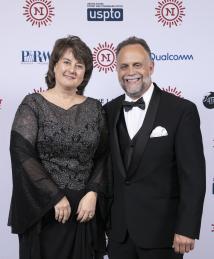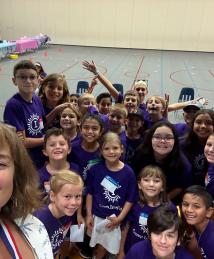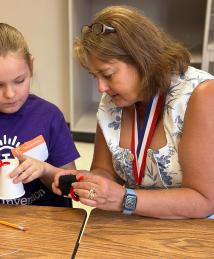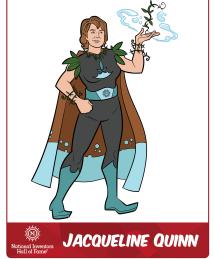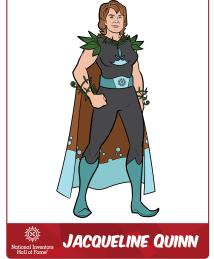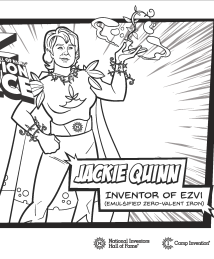Jacqueline Quinn
"‘I wonder if you could do this.’ It’s such a wonderful phrase, and a great way to start the day. You have to see if your ‘I wonder’ statement propels you into thinking a different way or looking at a problem differently."
An environmentally safe clean-up technology called emulsified zero-valent iron, or EZVI, was co-invented by NASA environmental engineer Jacqueline Quinn and a team of researchers from the University of Central Florida in the late 1990s. Quinn and her team developed EZVI to combat chlorinated solvent contaminants left over from space exploration’s early years, when NASA used chlorinated solvents as degreasers for rocket engine parts. The solvents, classified as Dense Non-Aqueous Phase Liquids (DNAPLs), are sources of environmental contamination at thousands of government and private industry facilities. Heavier than water, DNAPLs sink into the ground and can pollute fresh water sources if left untreated.
EZVI works by placing nano-scale zero-valent iron particles into a surfactant-stabilized, biodegradable water-in-oil emulsion. This emulsion is injected into DNAPL-contaminated groundwater where the system acts like a sponge, pulling the contaminant into the emulsion. Then, reacting with the zero-valent iron, the contaminant breaks down into harmless byproducts.
The EZVI system eliminates the need to dig up contaminated water and soil, requires less treatment time, produces less toxic and more biodegradable byproducts, and is cost-competitive. Now licensed for commercial use, EZVI has decontaminated groundwater supplies on government sites; near plants that manufacture dyes, chemicals, pharmaceuticals, adhesives, aerosols, and paint; and in dry cleaning, leather tanning, and metal cleaning and degreasing facilities.
Quinn earned her B.S in civil engineering from the Georgia Institute of Technology, and her M.S. and Ph.D. in environmental engineering from the University of Central Florida. Quinn holds 11 patents and continues to invent other technologies for environmental remediation, a field in which she is a recognized authority.

